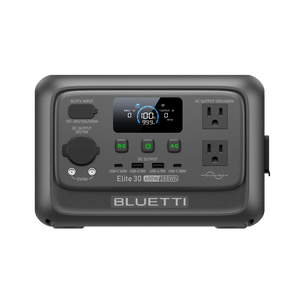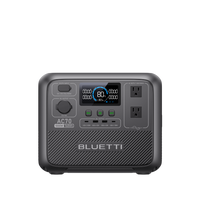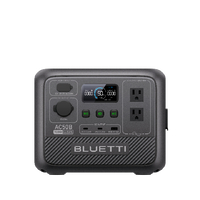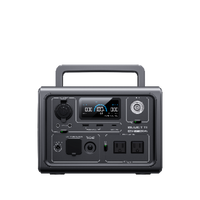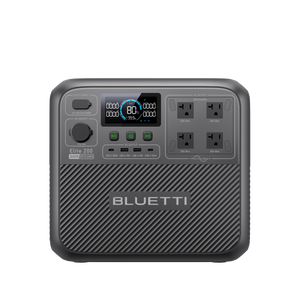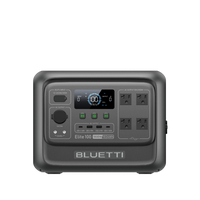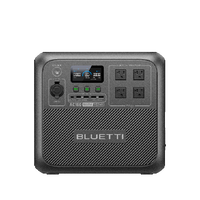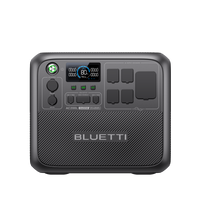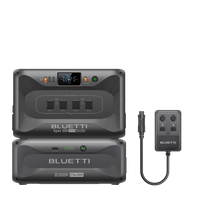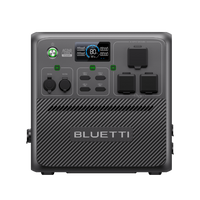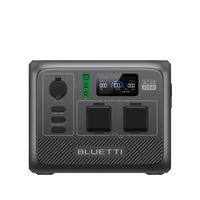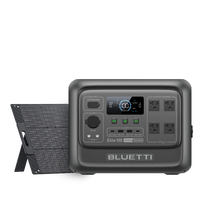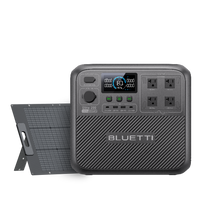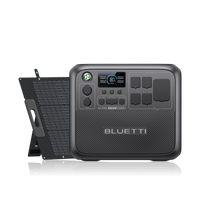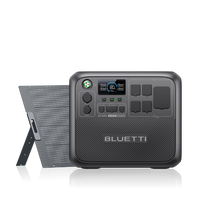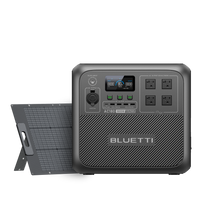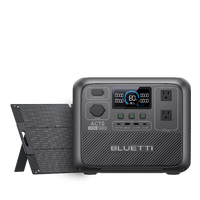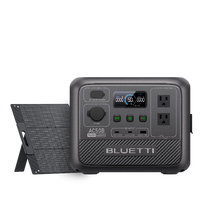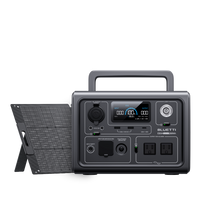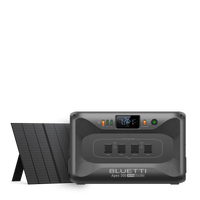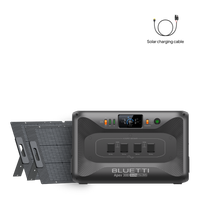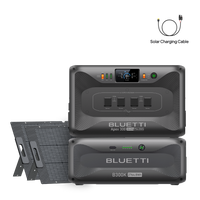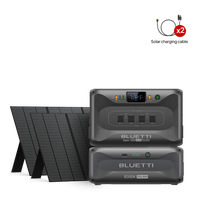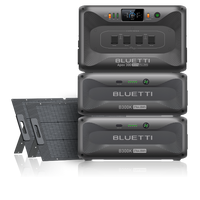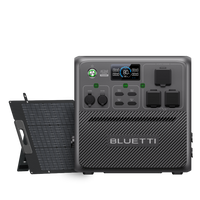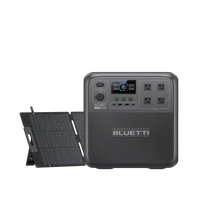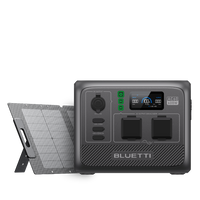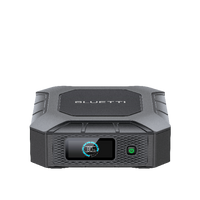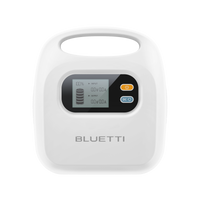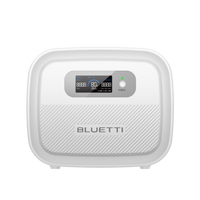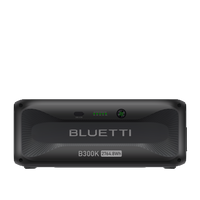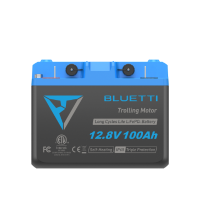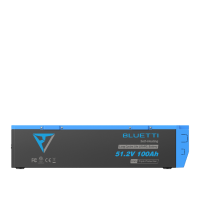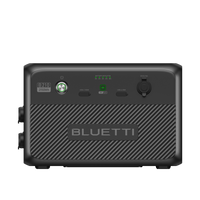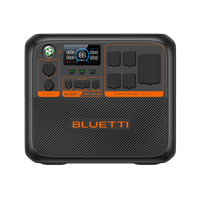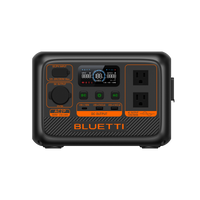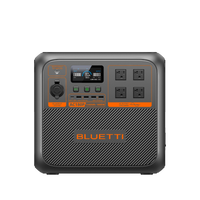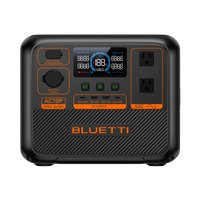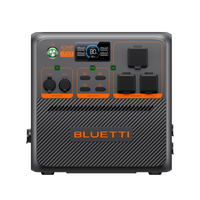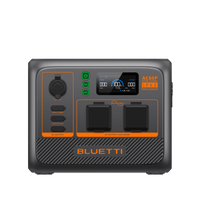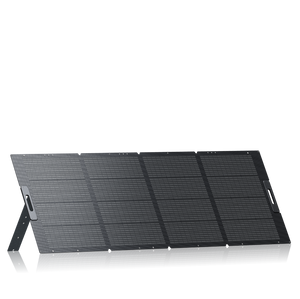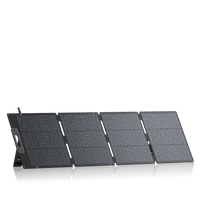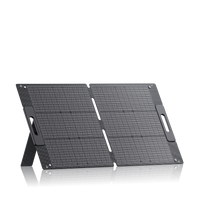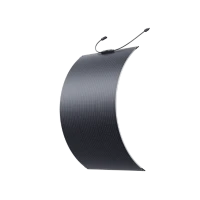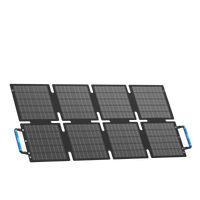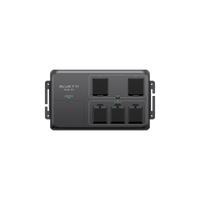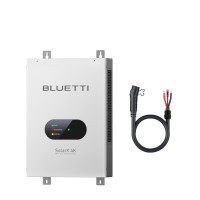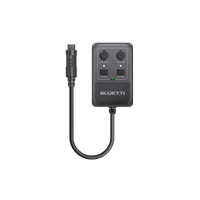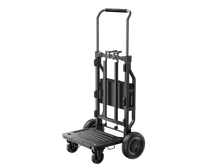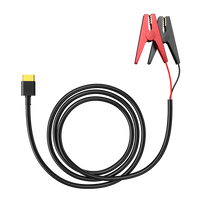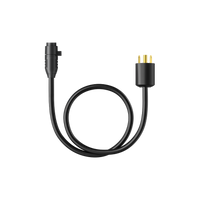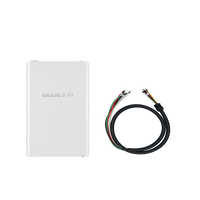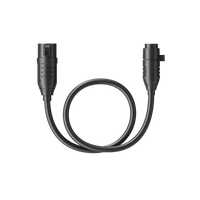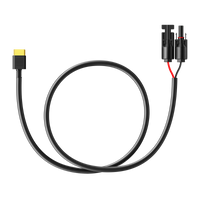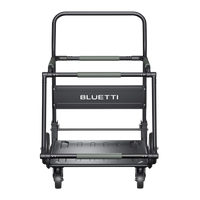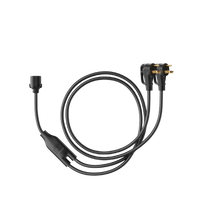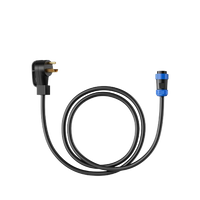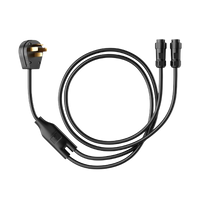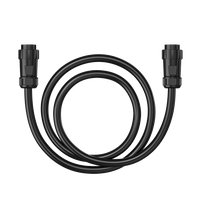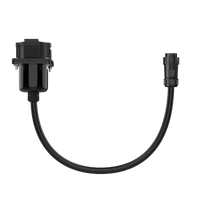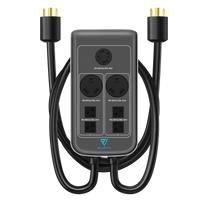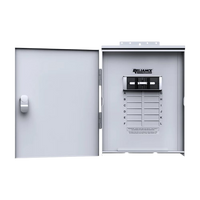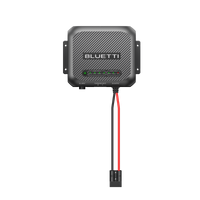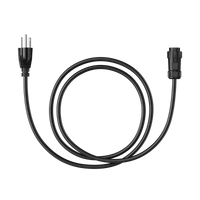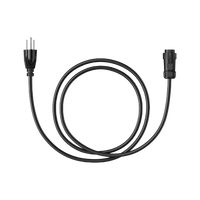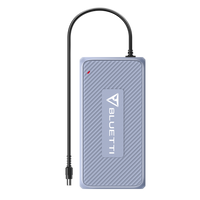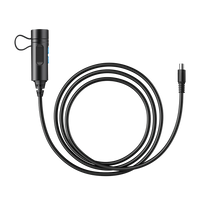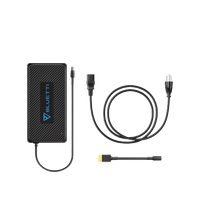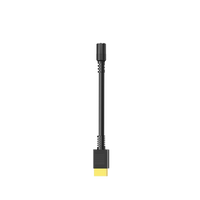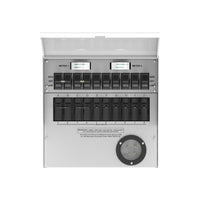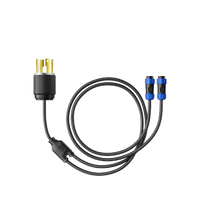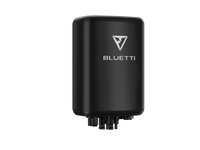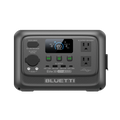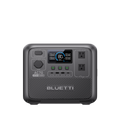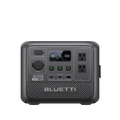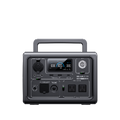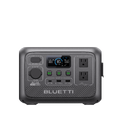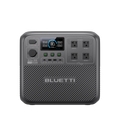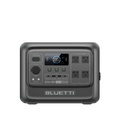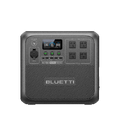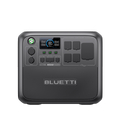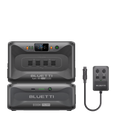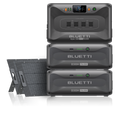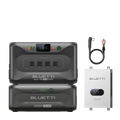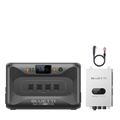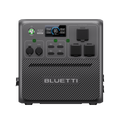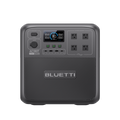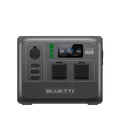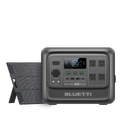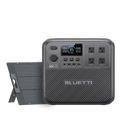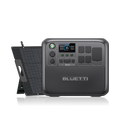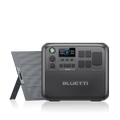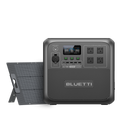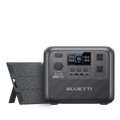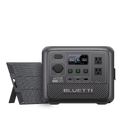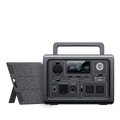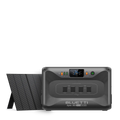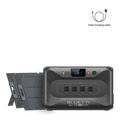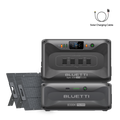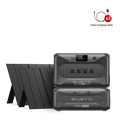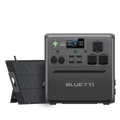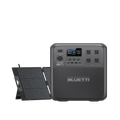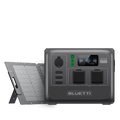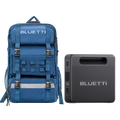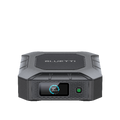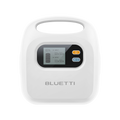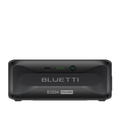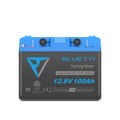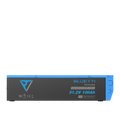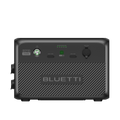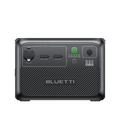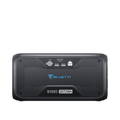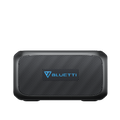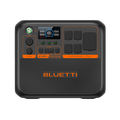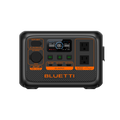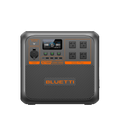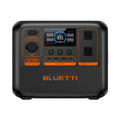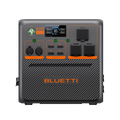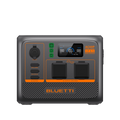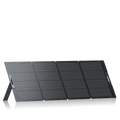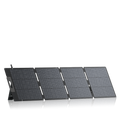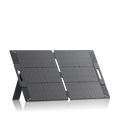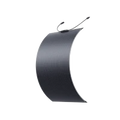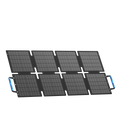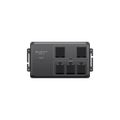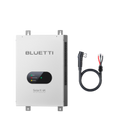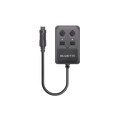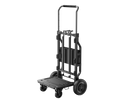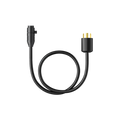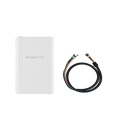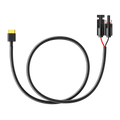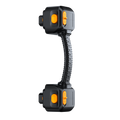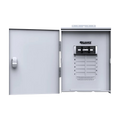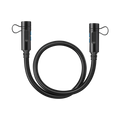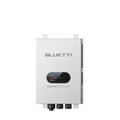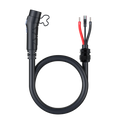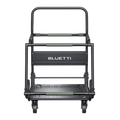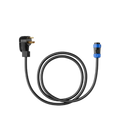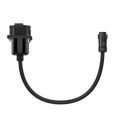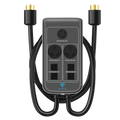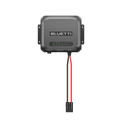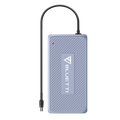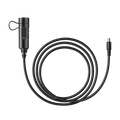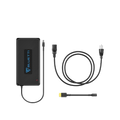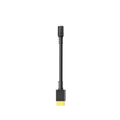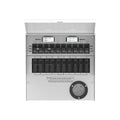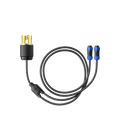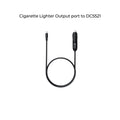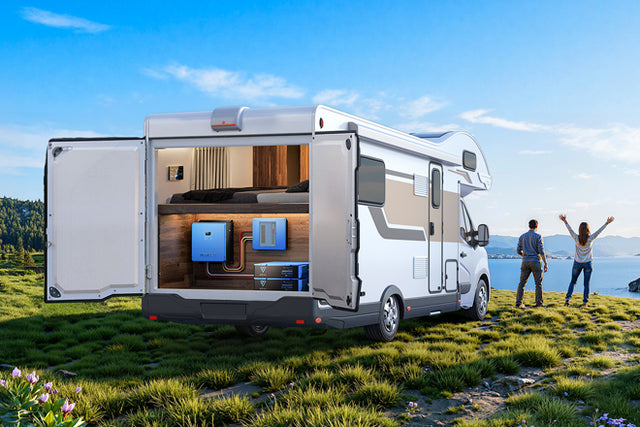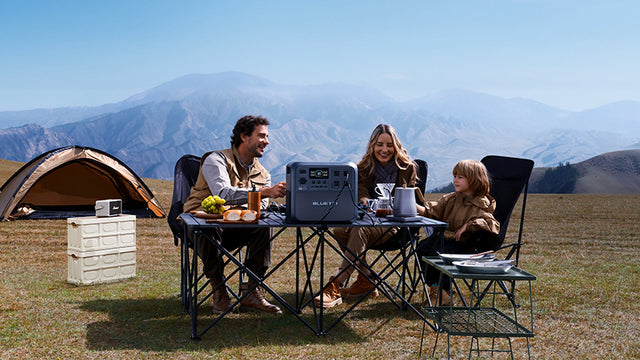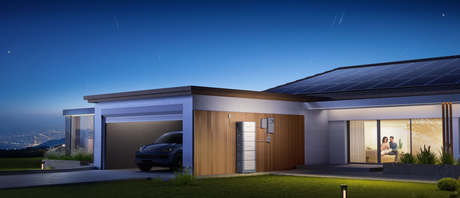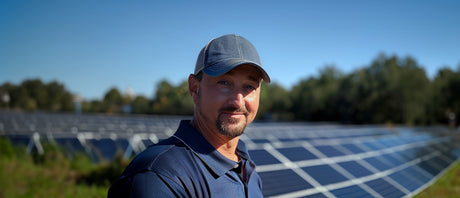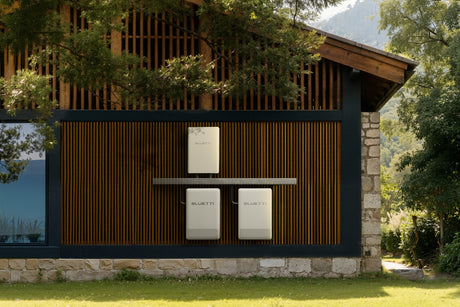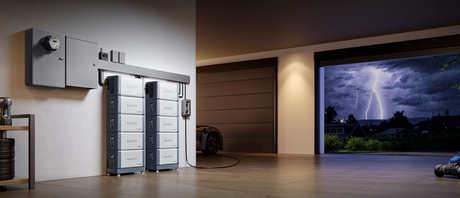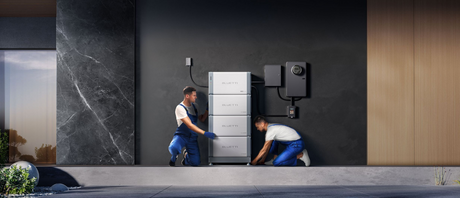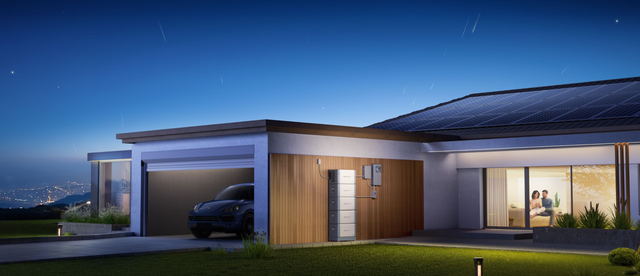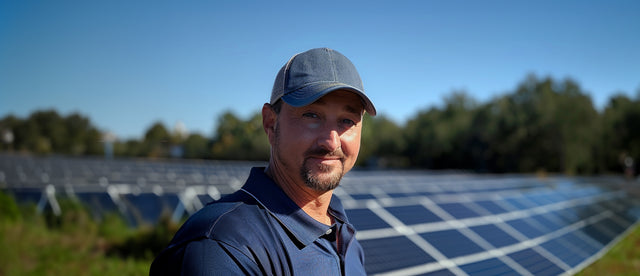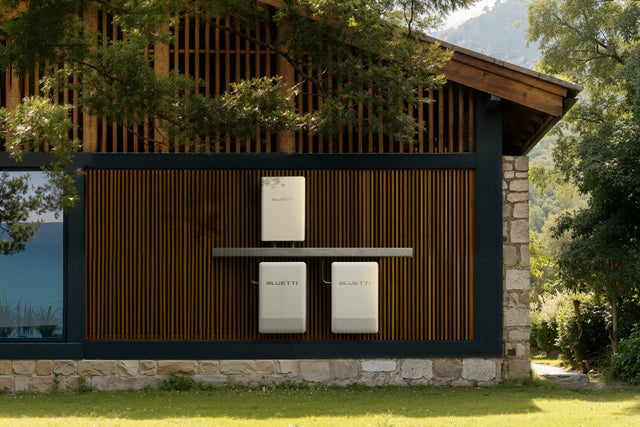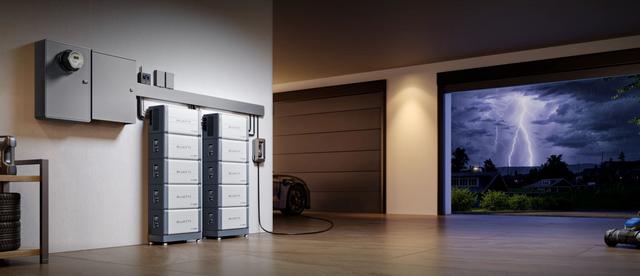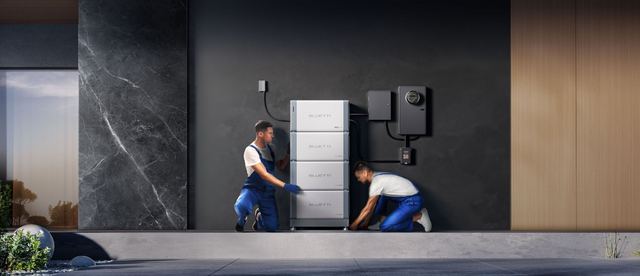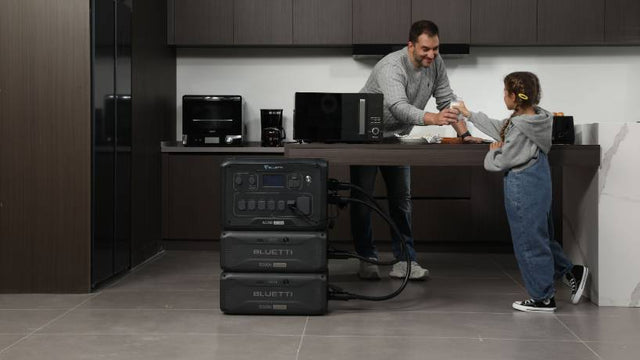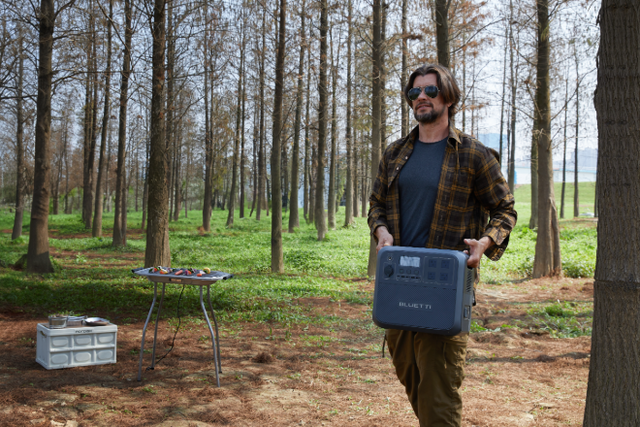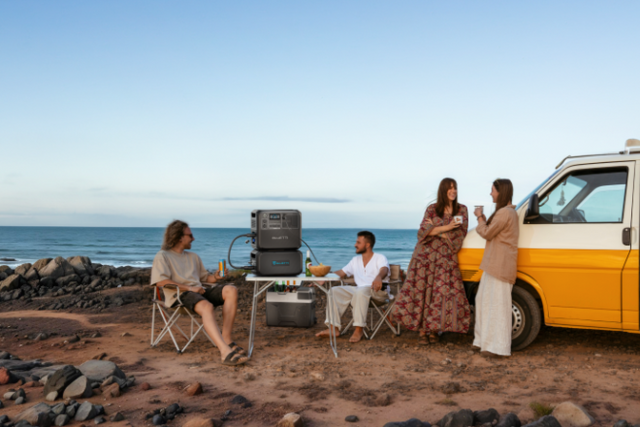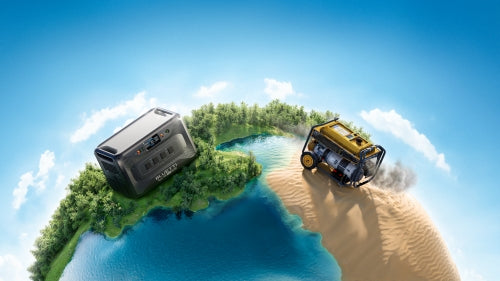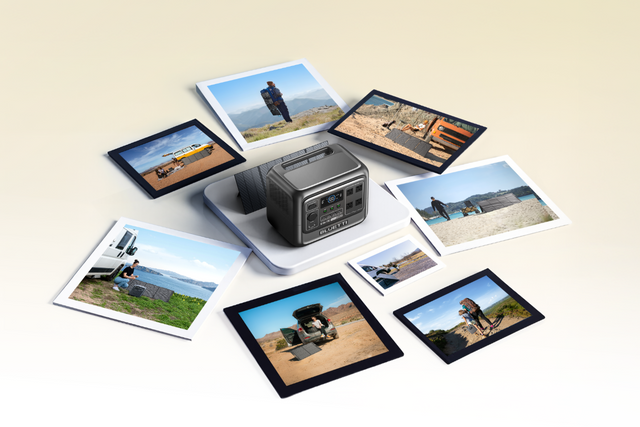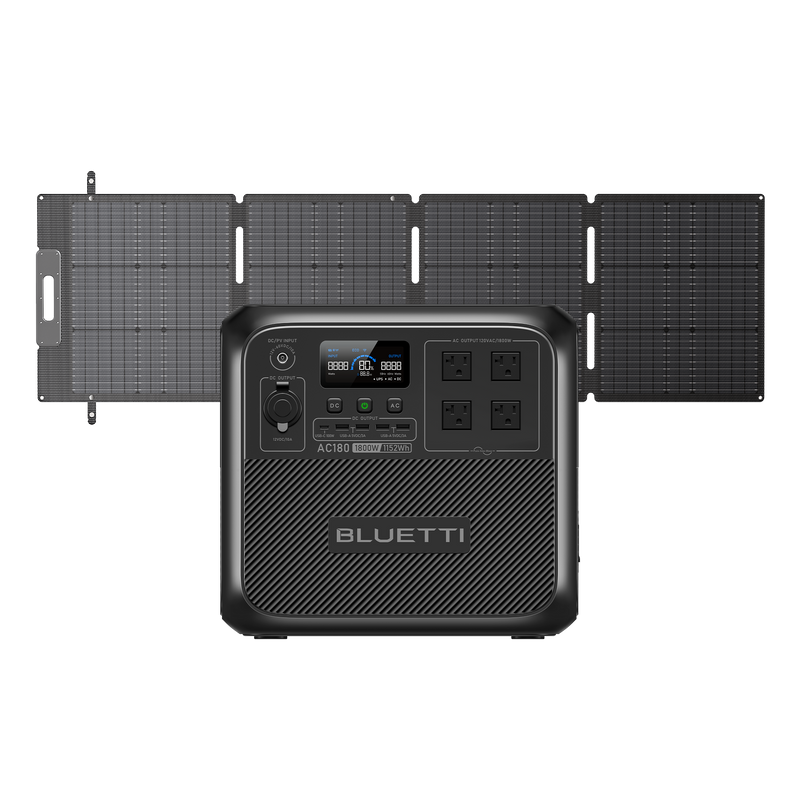Your cart is empty
Shop our productsPowering an RV isn't just about keeping the lights on; it's about ensuring your mobile lifestyle remains uninterrupted. What’s an ideal RV setup? Simple, one that runs essential appliances and keeps your HVAC active. And to make this setup a reality, you’ll need reliable RV shore power, since it provides a consistent and dependable energy supply.
However, relying solely on shore power can limit your flexibility. When hookups aren't available, portable power stations and battery backups provide essential alternatives. Let’s learn more about it and how we can benefit from RV shore power in light of power stations and batteries!
What Is RV Shore Power?

Simply put, RV shore power refers to connecting your RV to an external AC power source. It’s similar to connecting your mobile home to the same kind of electricity you have in your house. You'll find these connections at RV parks and campgrounds, and many people even install them outside their homes for visiting RVs.
When you hook up to RV shore power, you're essentially bringing the electrical grid to your mobile home. You connect using a special power cord, and suddenly all your onboard systems spring to life - outlets work, appliances run at full power, and your batteries charge automatically.
RV shore power comes in three categories:
-
15-amp connections: Basic power suitable for pop-ups or small trailers with minimal electrical needs. Similar to regular household outlets.
-
30-amp connections: The standard for most mid-sized RVs and travel trailers. Sufficient for running several appliances, but you'll need to manage your usage.
-
50-amp connections: PowerHouse setups for large motorhomes and luxury RVs. These connections actually provide two separate 50-amp, 120-volt lines, giving you substantially more power to run multiple high-demand appliances simultaneously.
Knowing which type your RV uses is crucial, as it determines what hookups you can use and how many appliances you can power simultaneously.
How Does RV Shore Power Actually Work?

Let us walk you through what happens when you plug in at a campsite. The process is straightforward but involves several important components working together:
Initially, you connect your RV's power cord to the campground's electrical pedestal. Once connected, electricity flows from the grid through your power cord into your RV's electrical inlet. From there, it passes through your main circuit breaker panel, similar to the one in your house. This panel distributes electricity throughout your RV's electrical system.
If you're running a generator or solar panels when you connect to shore power, your transfer switch automatically redirects your RV's power supply from your alternative source to the newly connected shore power - all without you lifting a finger.
The key components in this system include:
-
Power cords and adapters: These connect your RV to the power source and need to match your RV's amperage requirements.
-
Circuit breakers and surge protectors: They protect your electrical system from power surges and overloads that could damage expensive equipment.
-
Electrical distribution panel: Splits the incoming power to different circuits throughout your RV.
-
Battery charger/converter: Converts AC power to DC power to charge your RV batteries while you're plugged in.
All these parts work in harmony to deliver safe, reliable power throughout your mobile home. When properly set up, RV shore power feels just like being plugged in at home; everything simply works.
Shore Power Setups by RV Type

Different RVs come with different electrical setups, and understanding yours is essential for safe and effective power management.
15-Amp Systems
These basic systems appear in smaller travel trailers, teardrop campers, and converted vans. A 15-amp connection provides enough power for:
-
Interior and exterior lighting
-
Charging devices and small electronics
-
Running small appliances individually (not simultaneously)
-
Keeping your battery bank topped up
With 15 amps, you'll need to be conscious about running multiple appliances at once. Your microwave and coffee maker? Pick one. You've got about 1,800 watts total to work with.
30-Amp Systems
The workhorse of the RV world, 30-amp systems come standard in most mid-sized travel trailers and Class C motorhomes. With 30 amps at 120 volts, you get around 3,600 watts to distribute, allowing you to run:
-
A small air conditioner (but probably not two)
-
Basic kitchen appliances (though not all at once)
-
Entertainment systems and multiple devices
-
Interior/exterior lighting throughout your rig
The key limitation: you'll still need to manage your electrical load. Running your air conditioner, microwave, and electric water heater simultaneously will probably trip your breaker.
50-Amp Systems
Found in larger fifth wheels and Class A motorhomes, 50-amp service provides serious power. But here's a crucial detail many miss: A 50-amp RV service actually consists of two 50-amp, 120-volt legs that together provide up to 12,000 watts. This setup allows you to:
-
Run multiple air conditioning units simultaneously
-
Use all your kitchen appliances at once
-
Power residential-style refrigerators
-
Operate washers, dryers, and other luxury appliances
With a 50-amp setup, you'll rarely need to worry about power limitations at full hookup sites.
Essential Equipment, Installation, and Safety Tips

Essential RV Shore Power Equipment
Let’s get down to the nitty-gritty of RV power connections. If you're plugging into shore power, you're going to need some key equipment to keep everything running smoothly and safely.
Shore Power Cord (Power Cord)
This is your lifeline to the campground’s power pedestal. The cord you choose must match your RV’s needs - whether it’s 15, 30, or 50 amps. Most of these cords come with a convenient twist-lock design and a built-in handle for a secure, no-fuss connection.
Adapters
Here’s the thing: not every campsite is going to match up perfectly with your RV's power needs. That’s where adapters come in. A few essential ones to keep on hand include:
-
50-amp to 30-amp "dogbone" adapter: This one’s a must-have when your RV needs more juice than the outlet can provide.
-
30-amp to 15-amp adapter: Handy when you're dealing with a regular household outlet.
-
50-amp to 15-amp adapter: An emergency tool for when you're really in a pinch.
Surge Protector
This is non-negotiable: protect your rig from unpredictable electrical surges! A good surge protector guards your RV’s electrical system, preventing a nasty power spike from destroying your appliances and electronics. Spending a little extra now can save you thousands later.
Electrical Management System (EMS)
Think of this as the VIP protection service for your RV’s electrical system. An EMS doesn’t just stop at surge protection - it also checks for issues like low voltage, high voltage, reverse polarity, and open ground. If anything goes wrong, it cuts off the power to keep your RV safe. It’s the peace of mind you didn’t know you needed until you needed it.
Extension Cord
Sometimes, the pedestal is just too far from your RV, and your power cord won’t quite make the trip. Always use a heavy-duty extension cord that matches your RV’s amperage rating. And never, ever use a regular household extension cord - your RV deserves better.
Voltage Meter
This handy little tool checks if the campground’s pedestal is actually giving you the right voltage before you plug in. It’s a simple step, but one that can save you from a potential disaster.
Investing in good gear might feel like a pain now, but when you’re sitting in your rig, everything running like clockwork, you’ll thank yourself for it. A $100 surge protector now could save you a few grand in busted electronics later.
RV Shore Power Installation Guide
1. Nobody tells you how crucial shore power is until you're stuck with dead batteries in a week-long rainstorm. Trust us, it's worth installing.
2. First, decide on your amp needs. Most vans do fine with 30 amps, letting you run that space heater while brewing coffee. Bigger rigs with dual ACs might need 50, while minimalists can squeak by with 15.
3. You'll need an exterior inlet mounted somewhere accessible—I put mine near the driver's side rear quarter panel. Grab a proper shore power cord too; don't cheap out with regular extension cords.
4. Run a 10/2 wire with ground from the inlet to your inverter/charger. This component is non-negotiable - it charges your batteries while also sending shore power to your outlets once batteries are topped off.
5. Skip standalone chargers and transfer switches. An all-in-one inverter/charger unit saves headaches and, surprisingly, cash.
6. Don't forget adapters for standard household outlets. You'll thank yourself when you're desperately trying to charge at your friend's house.
7. And seriously - if electrical work makes you sweat, hire a pro. Nothing ruins a trip faster than a fried system or, worse, a fire.
RV Shore Power Safety Tips

Electricity doesn’t forgive shortcuts. Here are some golden rules:
-
Always use a surge protector or EMS unit. It's like insurance for your RV’s entire electrical system.
-
Inspect connections every time. Look for corrosion, heat damage, or cracks - especially on campground pedestals. Many older campgrounds may have outdated electrical systems. Always double-check outlets for heat or wear before connecting your RV.
-
Test before plugging in. A $10 outlet tester or multimeter can prevent a $3,000 repair.
-
Turn off the breaker before connecting. Always connect or disconnect with the power off to prevent arcing.
-
Respect your limits. Monitor how many watts you’re using at any given moment to avoid tripping circuits.
-
Keep cords dry. Use covers, keep them off the ground, and never let connectors sit in puddles.
-
Fully uncoil cords during use. Coiled cords trap heat and can melt insulation.
-
Adapt safely. You can adapt a 50-amp RV to a 30-amp outlet. Never do the reverse.
-
Feel for heat. Touch your cord connection periodically - if it’s warm or hot, unplug and inspect immediately.
-
Avoid trip hazards. Route cords safely to prevent damage or injury.
When Shore Power Isn’t Available: Essential Alternatives

Some of the best camping spots don’t come with power pedestals. But don’t worry, you’re not stuck in the dark. With the right tools, you can still thrive off-grid.
Portable Power Stations: Your Mobile Power Backup
Today, we have these portable power stations to help you with off-grid power. These compact units combine large batteries, inverters, and various ports to power all the essentials. They serve as your backup plan when shore power isn’t an option.
Take the AC180 portable power station, for example. With a 1152Wh capacity and an 1800W output (plus a 2700W surge), this little beast is perfect for RV owners. It’s much quieter than a traditional generator, so you won’t be disturbing your neighbors, and it’s versatile enough to charge from solar panels, your RV’s power system, or your car.
When paired with solar panels, the AC180 can keep your devices powered on during long trips. It also offers multiple output ports, including AC outlets, USB-C, and wireless charging. This thing can run a laptop for 10-12 hours, charge your phone for days, and even power a residential fridge for up to 8 hours.
RV Battery Systems: The Heart of Off-Grid Power
If you plan to boondock often, you’ll need a reliable battery system. Many RVs come with basic lead-acid batteries, but if you want to upgrade, lithium batteries are the way to go. They charge faster, last longer, and give you more usable power. A good battery monitor is crucial as well - keeping track of your power usage helps you avoid getting stuck without enough juice.
Solar Power: Harvesting Energy on the Road
Solar panels are the ultimate self-sufficient energy solution. A well-designed solar setup can give you the freedom to stay off-grid indefinitely. You’ll need panels, a charge controller, and a battery bank to store the energy you capture. When done right, solar can keep you in the wilderness with no need for shore power.
The Pros and Cons of RV Shore Power
As with anything in the RV world, shore power has its highs and lows. Let’s break it down so you know what you’re getting into.
Advantages of RV Shore Power
-
Unlimited Power Supply: As long as you're plugged in, you've got power. No more rationing battery life. Run your air conditioning, microwave, and everything else without a second thought.
-
Full Functionality: Your RV will run just like a home - the residential fridge stays on, the AC stays cold, and the microwave heats up. It’s like your rig just became a mini house.
-
Automatic Battery Charging: While you're plugged in, your converter keeps your house batteries topped off, so you're good to go when you need to unplug.
-
Convenience: No noise from a generator, no panels to adjust, and no power management to worry about. Just plug in and relax.
-
Widely Available: Most campgrounds and RV parks offer shore power, so you can rely on it just about anywhere.
Disadvantages of RV Shore Power
-
Limited Travel Flexibility: Shore power ties you down to established campgrounds, meaning you can’t just pull off the side of the road for a random wilderness retreat.
-
Electrical Quality Issues: Not all campgrounds are created equal. Older parks might have unstable voltage, which can fry your RV’s electronics if you’re not careful.
-
Higher Costs: Full-hookup sites tend to cost more than dry camping, especially if you’re just looking for a place to park and sleep.
-
Power Outages: When the campground’s power goes out, so does yours. Unless you’ve got a backup system, you're in the dark.
-
Connection Hassles: Plugging in and setting up can take some time, adding another step to your arrival and departure routines.
Most seasoned RVers work a little hybrid magic into their systems - relying on shore power when they can, but always having alternatives ready for when they can’t.
Portable Power Stations vs. RV Shore Power: Complementary Solutions

Can portable power stations replace shore power? Not entirely. But they do serve different purposes that make them a perfect complement.
Portable power stations like the AC180 are fantastic for:
-
Running smaller appliances for limited periods (think CPAP machines, laptops, lights)
-
Providing power when you're away from your RV (during hikes, day trips, or outdoor activities)
-
Being a reliable backup when shore power isn’t available
-
Powering specific circuits during emergencies
But they can't replace the high capacity and flexibility of shore power entirely, especially for long-term off-grid trips or running large appliances. The key? Use both, depending on your needs. If you’re boondocking for a few days, the portable power station will do the trick. For longer stays or more power-hungry appliances, you’ll want that shore power connection.
Can They Fully Replace Shore Power?
If you’ve spent any time RVing, you already know - shore power isn’t just convenient, it’s foundational. Here’s why it remains irreplaceable for many of us on the road:
-
High-demand situations, like running your A/C non-stop in 95°F heat.
-
Using multiple power-hungry appliances at the same time (microwave, hair dryer, and more!).
-
Stationary camping for extended periods without constantly babysitting your power levels.
-
Living with true “house-like” comfort, minus the compromises.
The Hybrid Sweet Spot
The best power setup blends shore power with modern portable options. Shore power anchors your system when it’s available, while solar, portable stations like the AC180, and upgraded batteries extend your freedom to roam. With the right setup, you’re equally ready for luxury hookups or wild boondocking bliss.
FAQS
Which RV shore power components do you need for reliable hookups?
To ensure safe and stable power at campgrounds, bring a heavy-duty RV power cord that matches your amp rating, a surge protector or EMS for voltage protection, and a few adapters for different outlet types. An inlet surge protector adds extra safety. These basics keep your RV powered and your electronics protected.
How do portable power stations help?
Portable power stations are great for off-grid use, powering devices when shore power isn’t available. They’re also handy during outages and can extend boondocking time—especially when recharged by solar panels.
Why choose the BLUETTI AC180?
The AC180 offers a 1152Wh LiFePO₄ battery, 1800W output (2700W surge), and fast charging—full in about an hour. It’s compact and lightweight, making it ideal for RV travel and off-grid power needs.
Final Thoughts: Don’t Rely on Just One Power Source
RV shore power has been the gold standard for decades, and for good reason. But tools like the AC180 portable power station are changing the game. They add layers of flexibility and backup that old-school setups just can’t offer.
Our advice?
Don’t put all your amps in one basket.
Build a hybrid system that blends shore power, solar, battery storage, and portable solutions. You’ll stay powered up and ready - no matter where the road leads.
Start with a rock-solid shore power setup. Add something like the AC180 to cover your bases. Then tweak, scale, and customize based on how you actually camp. That’s the real path to RV electrical freedom.
Shop products from this article
You May Also Like

Living Off the Grid: Beginner’s Guide to Off-Grid Homes


